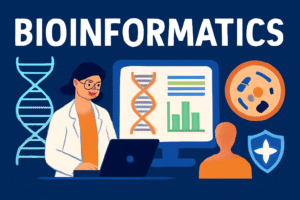Unraveling the Mysteries of Research: Operationalization and Proxy Measurements
Welcome to the fascinating world 🌍 of research methodologies, where we transform abstract concepts into tangible realities 🎩🔍 and find ingenious ways to measure the immeasurable. Today, let’s delve into two crucial concepts: operationalization and proxy measurements. These techniques are not just the backbone of research but also a window into understanding complex phenomena in a more humanized and relatable manner.
Operationalization: Making the Abstract Tangible 📏🌌
Have you ever tried to describe a feeling or an idea that’s just too nebulous to put into words? That’s where operationalization comes in. It’s like a translator 🗣️📚 that turns abstract concepts into something we can actually measure and analyze.
The Art of Defining the Intangible 🎨🧩
Operationalization starts with a challenge: How do we define something that can’t be touched or seen? It’s a bit like trying to describe the flavor of a spice without using your sense of taste. The key is to break it down into smaller, observable parts.
Real-Life Example: Measuring “Stress” 😥❤️
Consider the concept of “stress.” It’s something we all talk about, but how do we measure it? Researchers start by asking, “What does stress look like?” It might be a racing heart when you’re about to give a big presentation or that feeling of exhaustion after a long day. So, they measure these indicators – heart rate, cortisol levels, self-reported feelings – to get a grip on this slippery concept. Just like a chef deconstructing a complex dish into individual ingredients, researchers dissect abstract ideas into measurable elements.
Proxy Measurements: The Art of Indirect Measurement 🔍🌲
Sometimes, what we want to measure is as elusive as a shadow, always present but intangible. That’s where proxy measurements, the Sherlock Holmes 🕵️♂️🔎 of research methods, come in. They don’t give up just because something can’t be measured directly. Instead, they find clever clues that point to the answer.
When Direct Measurement is a No-Go 🚫📏
Imagine trying to figure out the age of a tree without turning it into timber. Cutting it down would defeat the purpose, right? So, researchers turn to tree rings – each ring a secret keeper of a year gone by.
A Peek into History: Tree Rings Tell a Story 📖🌳
In this case, tree rings are our proxies. By counting them, we get a glimpse into the tree’s life story. It’s like reading a biography of the tree, with each chapter representing a year. This method isn’t just about numbers; it’s a narrative of survival, growth, and the passage of time.
Why These Methods Matter 💡🌐
Operationalization and proxy measurements are more than just research techniques – they’re a testament to human ingenuity and our relentless pursuit of understanding. They remind us that even when something seems immeasurable, with a bit of creativity and scientific rigor, we can find ways to grasp it.
Beyond the Lab: Impact on Daily Life 🏠🌍
These methods aren’t confined to the ivory towers of academia. They influence everything from healthcare policies to environmental conservation strategies. When we measure stress accurately, we can better tackle mental health issues. When we understand the age of a tree without harming it, we contribute to preserving our precious ecosystems.
In Conclusion: Embracing the Complexity of Our World 🤗🌟
Operationalization and proxy measurements are not just tools for researchers; they’re lenses through which we can view the world in all its complexity. They encourage us to question, explore, and never settle for the surface-level understanding of the phenomena around us.
So, the next time you hear about a new study or a groundbreaking discovery, think about the unsung heroes behind it – the methods that made it all possible. Remember, in the realm of research, there’s always more than meets the eye, and that’s what makes it so endlessly fascinating.
